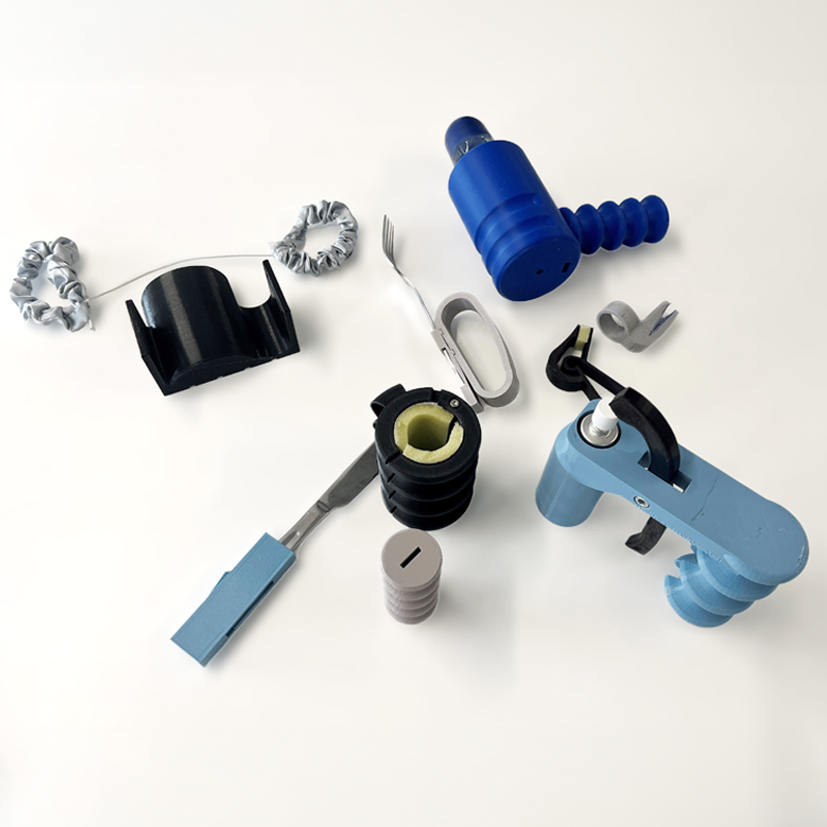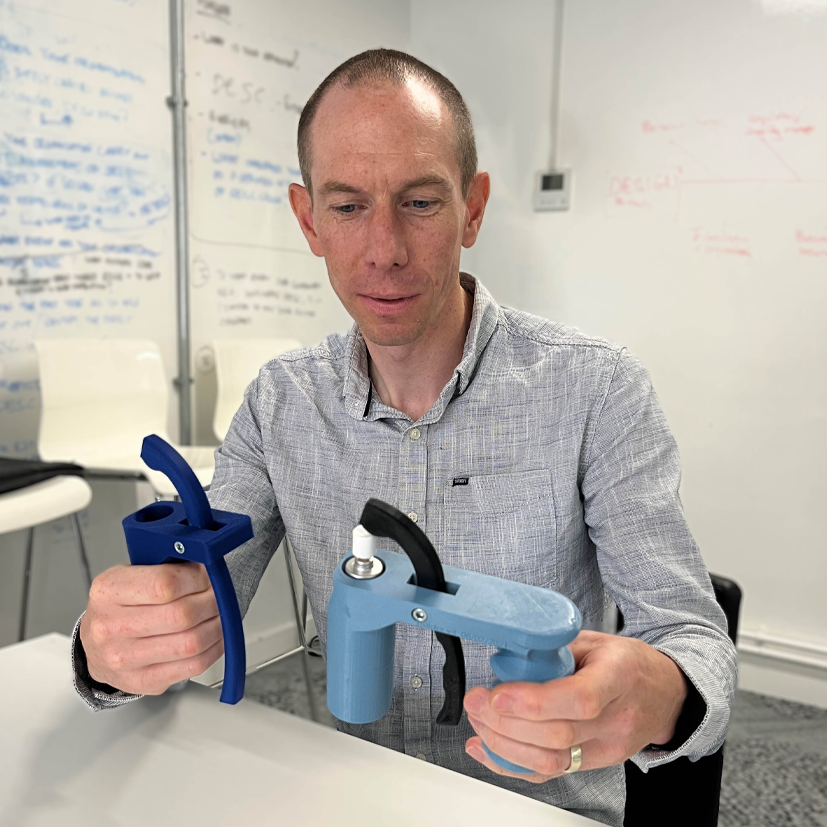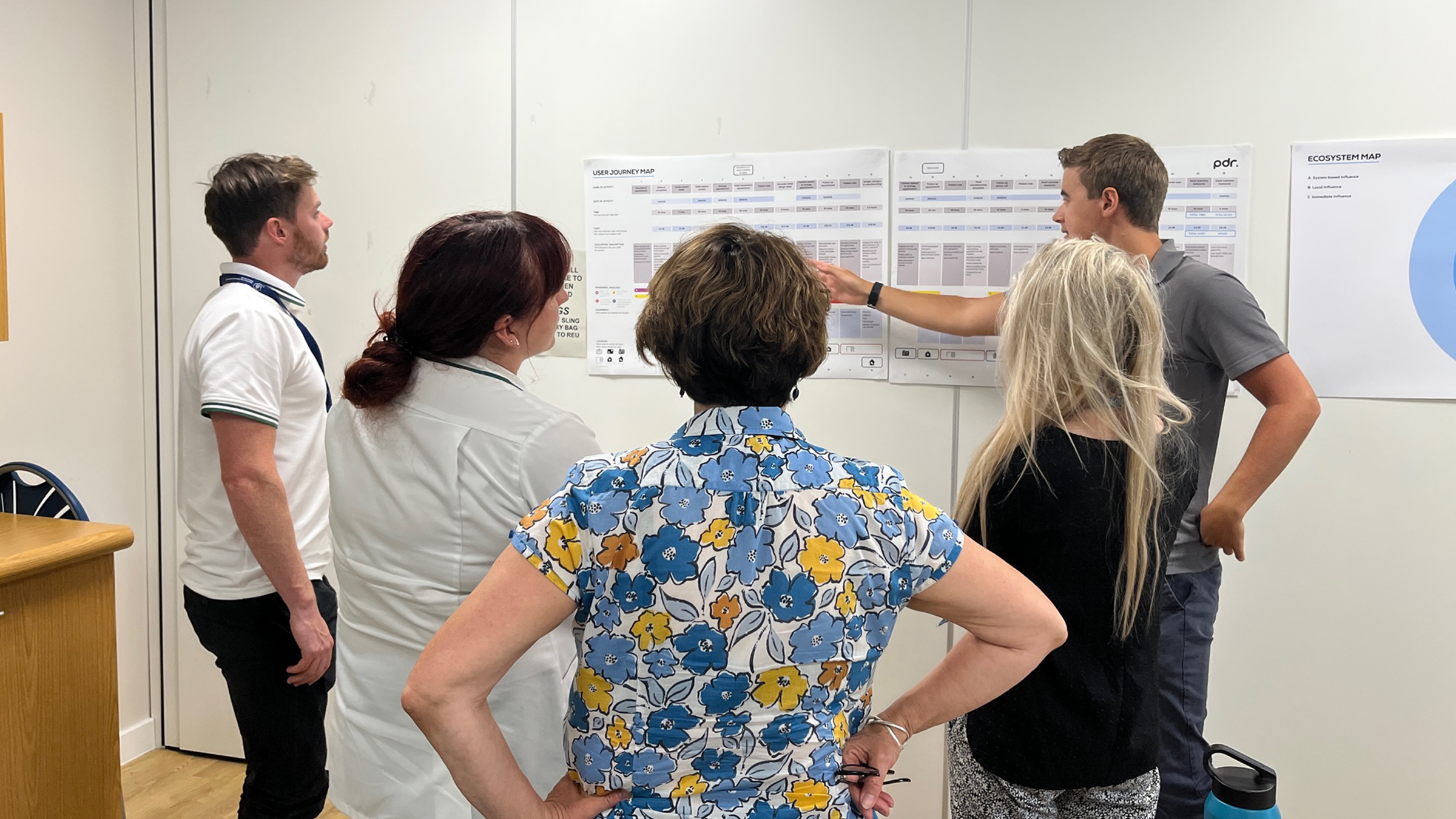Medical collaboration showcases PDR’s strengths in research and product design
What do you get when you bring together designers with skills in medical and surgical design, eco-design and human-centred research with experts in user-experience design, design engineering and product design? A happy collaborator and an impressed funding body!
Take PDR’s recently completed project with the Rehabilitation Engineering Unit at Swansea Bay University Health Board (SBUHB). Nicknamed “TIDAL” (thanks to a £47,000 supporting grant from the UKRI’s TIDAL Network+), it focused on increasing patients’ access to customised living aids.
PDR worked with rehabilitation engineer Dr Jonathan Howard from SBUHB. Jonathan’s research focuses on assistive technology (AT) – tools such as grip aids, applicators and other hand-held adaptive devices. He found that involving the people who would use these devices in the design process creates better products and better outcomes for people living with disabilities or chronic illness. The challenge was to find a way to scale up the production of such devices so that more people could receive the benefits, while still enabling devices to be customised to fit individual users and without requiring huge investments in equipment or staff training.
PDR’s research team began by holding a series of exploratory workshops with rehabilitation engineers, physiotherapists, occupational therapists and other health professionals involved in prescribing or designing AT. You can read more about the early stages of the project here.

“One of the key insights we discovered is that AT is not just about fit and function – although those are incredibly important,” said PDR’s Professor Dominic Eggbeer. “Aesthetics – how the device looks and feels – matters a great deal. In many instances, these devices act as extensions of the user. They depend on them to perform essential daily tasks, often quite personal ones. Ugly, clunky devices more reminiscent of hospital than home are off-putting and demoralising. Unless designers create products that people actually want to use, they’ll end up abandoning them in drawers after a few attempts.”
PDR’s product design team based their work on Jonathan’s prototype designs, branching out in many directions looking for sources of innovation: new environmentally friendly bioplastics, the latest capabilities in digital design and printing, and emerging trends in homewares. A range of contemporary colours was selected to offer users a complete departure from hospital blues and greys, and advanced 3D printing techniques were identified that would enable surface textures to be customised to create easy clean surfaces or tactile grips.
According to industrial designer Dominik Daniel Bini, the focus was finding the best ways to add value to the design process. “Having custom parts for different users restricts us significantly in terms of form factor. However, we have strived for a better and unique experience to provide consumers with the same feeling they get when purchasing an object they desire from a retail store. This extends from the form factor to the unboxing experience, allowing us to shift the perception that hospitals and medical devices are no longer only associated with functionality and health; instead, they now stand as symbols of empowerment and individuality. We embrace your uniqueness and we celebrate this.”
The team went beyond the brief to find ways to further enhance the devices. They broke the designs down into modular components, so that common elements such as handles could be interchanged. This would reduce manufacture time and enable devices to be easily repaired or adapted for changing user needs. In addition, the team found a creative way to make the finished products look as “normal” as possible by designing simple, recycled labelling and branding. A QR code was added to enable users to quickly access information on the use and care of their product and to send feedback to their health practitioner.

PDR research and product designs teams worked on a user-friendly visual interface that would cater to health practitioners with varying levels of experience or interest in using computers. Together with the device’s users, they would be able to browse a database of existing designs and reproportion or resize them simply by adjusting sliders or entering basic measurements. On-screen previews would show realistic 3D models in full colour, ensuring that patients and their families could have a clear understanding of how each device would look before it was manufactured.
Following the end of the six-month TIDAL-funded phase of the project, Dr Katie Beverley led the team in creating a comprehensive policy document outlining a number of significant ways in which the health sector will need to reorient itself to make such a system feasible. This entailed planning for future needs of the health workforce, ensuring that adequate funding is available to develop custom AT, and reviewing the regulatory framework for AT to encourage more custom manufacture. The TIDAL N+ reviewers were particularly impressed with this report, calling the recommendations “insightful” and regarding it as a roadmap to the future of AT.
Next Steps
Learn more about work in Surgical and Prosthetic Design or if you have an idea you’d like to discuss, Contact us.

